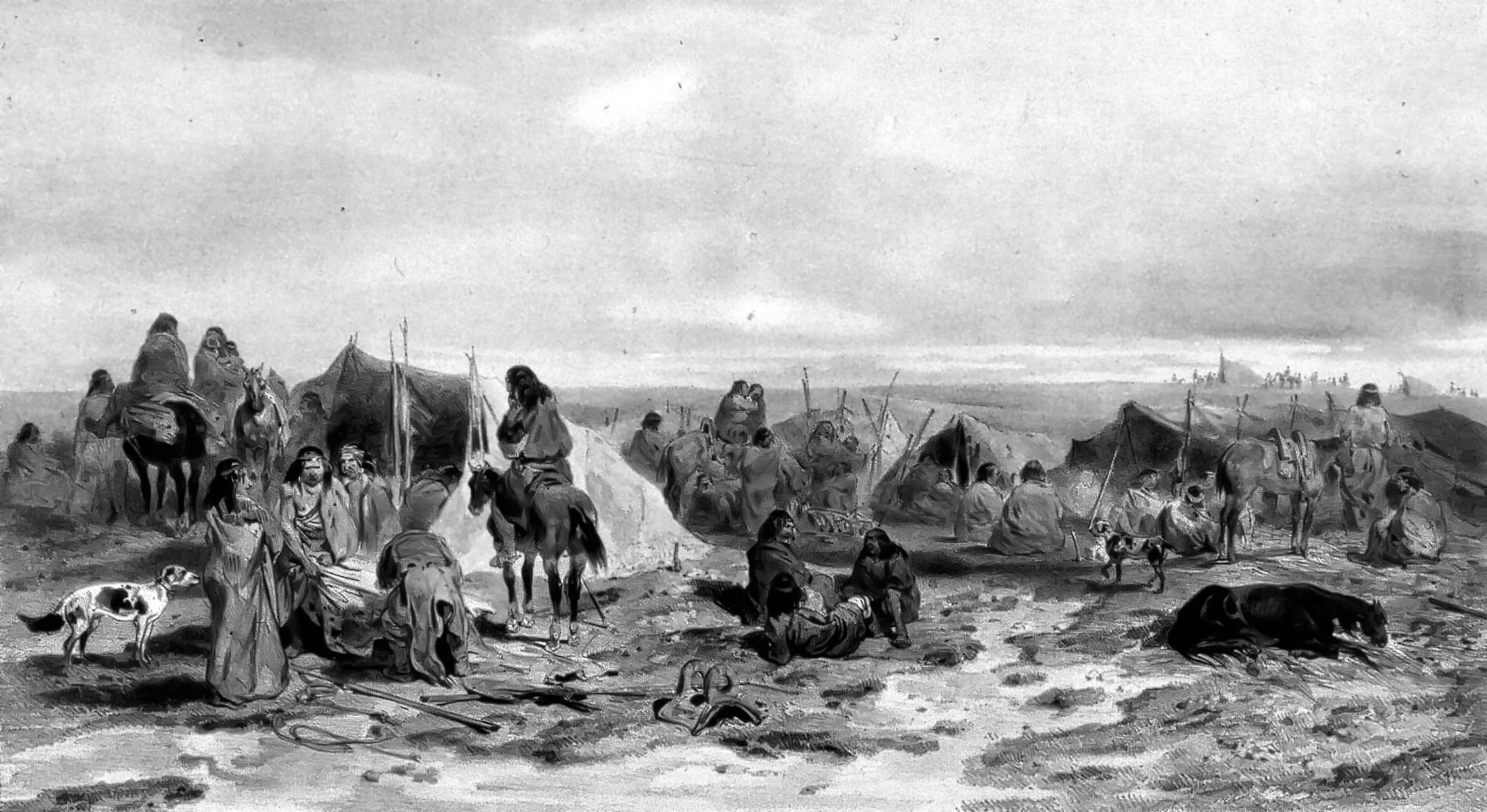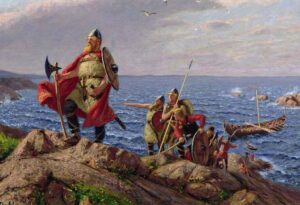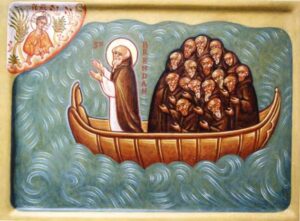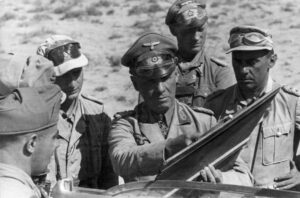Explorers and mapmakers called uncharted lands Terra Incognita. Though Columbus’s expeditions revealed parts of the New World, some regions remained isolated and mysterious. One such blank spot was Patagonia. It remained an unknown frontier for centuries after Columbus, with only crumbs of information filtering back to Europe.
Idealistic Portuguese explorer Ferdinand Magellan made his name circumnavigating the world in the 1500s. In the far reaches of South America, he claimed to have met a mysterious race of giants. Word of these Patagonian giants spread, and the legend has persisted. But was there any truth to Magellan’s claims?
Background
Magellan and Columbus had the same vision. They believed the Earth was round and that they could reach the east by sailing west.
Magellan initially petitioned the Portuguese king Manuel I for funding to sail to the Moluccas (in modern-day Indonesia) but was rejected. Instead, Magellan did what Columbus did: He turned to Spain. King Charles V agreed to sponsor the project, and Magellan acquired a fleet of five ships carrying 270 men. He departed Spain in September 1519.
However, the expedition experienced continuous bad luck. The crew suffered malnutrition, starvation, disease, and bad weather. There were mutinies and plenty of bad behavior.
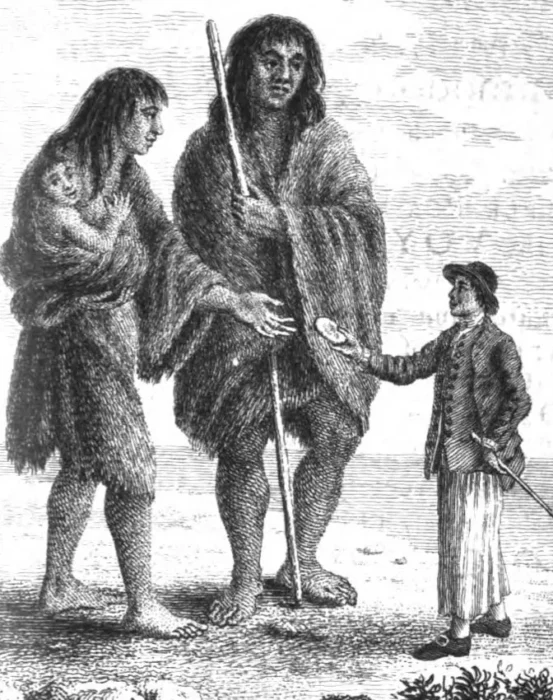
Illustration of the Patagonian giants. Photo: John Byron’s A Voyage Round the World in His Majesty’s Ship the Dolphin (1767)
Their ships crawled along the coast of South America and eventually made landfall in a mysterious region that Magellan later named Patagonia.
Magellan finds giants
A scholar named Antonio Pigafetta accompanied Magellan to document the voyage. He described the expedition’s first encounter with giants.
According to Pigafetta, Magellan and his men saw a very large naked man dancing on the beach. Magellan ordered one of his crew to mimic the dance to show they meant no harm. The dance worked, and the crew approached. Up close, the sailors were astounded to find that the naked man was over nine feet tall.
They named the giant Paul. “Paul” allowed the foreigners to meet his people, a tribe that wore animal skins.
“His face was large and painted red all over except that around the eyes were yellow circles,” Pigafetta wrote of Paul. Pigfetta claimed that their reflections in mirrors scared the giants.
Magellan wanted to exhibit this extraordinary race of people and decided to take two men back to Spain. He lured them onto his ship with shiny metallic objects. But both men died on the journey back to Europe.
“Patagonia” translates as “land of the bigfoot” in Portuguese, and the people were called “patagao.”
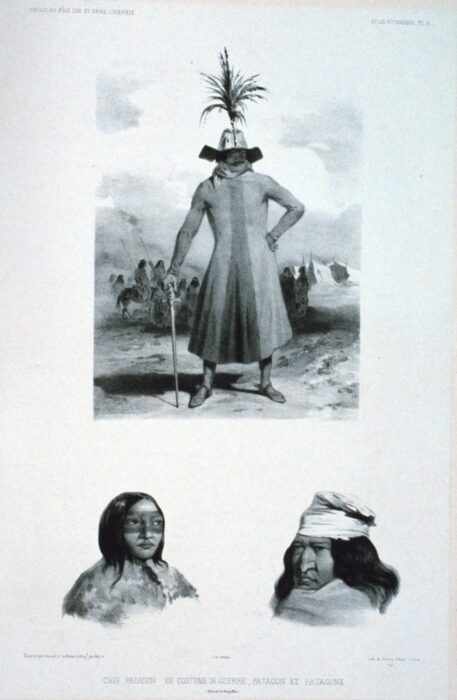
Patagonian giants in their animal skins and hats. Photo: Voyage au Pole Sud et Dans l’Oceanie by Jules Dumont d’Urville
More reports
More reports of giants in Patagonia began to pop up, including by Dutch sailors in the late 1500s.
In 1764, naval captain John Byron (the grandfather of the poet Lord Byron) claimed to have met the giants during his global circumnavigation on the HMS Dolphin.
“If I may judge of his height by the proportion of his stature to my own, it could not be much less than seven feet,” Byron wrote. Some of his sailors described the giants as nine feet tall.
In 1853, Captain Benjamin Franklin Bourne published an obscure account of the giants. His book, Giants of Patagonia: Captivity Amongst the Extraordinary Savages of Patagonia, claims giants kidnapped him when he sailed to Terra del Fuego looking for gold. In Bourne’s account, the giants spoke broken Spanish, were very large and muscular, hydrophobic, and morally lacking.
“They are taller than any other race I have ever seen. Their average height is nearly six and a half feet,” Bourne wrote. He described the race as having superhuman strength, brown or black eyes, and coarse hair. Their tribe numbered 1,000.
But not everyone was convinced. Sir Francis Drake thought the Spanish were lying about the giants. “The Spaniards did not think that any Englishman would come hither to reprove them, and therefore might presume the more boldly to lie,” he said.
Yet a chaplain acquainted with Drake swore to have seen bodies measuring 12 feet long while on a voyage in the region with the English privateer Sir Thomas Cavendish.
Hoax?
In the late 1600s, an unusual body arrived in Britain. Allegedly, Spanish sailors traveling through Patagonia killed a giant after it attacked and killed four sailors. They brought the body back to Europe, where it was exhibited in freak shows.
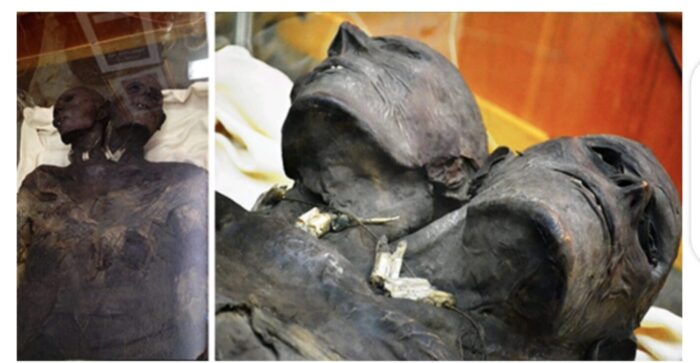
Mummy of the giant Kap Dwa. Photo: Bob’s Sideshow
The corpse was 12 feet long and had two heads, almost like a conjoined twin. People called it Kap Dwa, meaning “two heads.” The mummy was bought and sold several times before it landed in an obscure little exhibition in Baltimore, U.S. In Bob’s Sideshow, it is displayed alongside two-headed ducks and the bones of “Dracula’s son.”
However, no academic takes the mummy seriously.
What are the facts?
It was not uncommon for explorers to stretch the truth or even make things up. Perhaps Magellan exaggerated many of the details to compensate for the Patagonian people’s strangeness. Magellan’s “giants” could have been the Tehuelche. This Indigenous group populated Patagonia, Argentina, and southern Chile (from the Strait of Magellan to the Rio Negro). They wore the skins of guanacos, a relative of the llama. However, studies show they were of average height, ranging from five to six feet.
Reports varied wildly on the giant’s heights. Some sources describe them as six feet, others up to 12 feet. Could it be that these people were simply taller than your average sailor? Historians note that Europeans during the Age of Discovery rarely exceeded 5′5″.
Another possibility is the Selk’nam people. This group was also reportedly tall, often six feet or more. The Selk’nam inhabited the islands of Tierra del Fuego, but colonists wiped them out in the 19th and 20th centuries.
